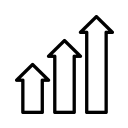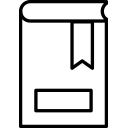Breast Engorgement
Breast engorgement refers to pain, tenderness, and swelling that occurs in the breasts during milk production. It can occur in the initial days after childbirth due to increased blood flow and milk supply or at any time when milk production exceeds milk removal.
Breast Engorgement falls under thePregnancy & Childrencategory.
Last Updated:October 13, 2024
Breast engorgement is the condition in which the breasts become overfilled with milk, leading to firmness, tenderness, and pain, and it typically occurs 3 to 5 days postpartum or whenever the milk supply exceeds removal. Effective management and prevention are crucial to reduce the risk of breastfeeding complications such as mastitis and latching difficulties.
Breast engorgement is characterized by firm, tender, and swollen breasts that may appear larger, uneven, and shiny, with visible veins and potential swelling that extends to the armpit. Symptoms can include pain, flat or inverted nipples, and a mildly elevated body temperature, and it is common to experience some degree of engorgement in the first week postpartum.
Breast engorgement is diagnosed clinically based on signs and symptoms, without the need for tests or imaging. If symptoms worsen or fever occurs, medical attention should be sought because it may lead to more serious conditions.
Most treatments for breast engorgement focus on effective milk removal through frequent breastfeeding or pumping, and medical management is typically unnecessary for primary engorgement. Over-the-counter pain relievers like ibuprofen and acetaminophen can help alleviate symptoms, but antibiotics are not suitable for engorgement itself.
There is no evidence to support the use of oral supplements specifically for breast engorgement, although sunflower lecithin and certain probiotics are sometimes used to prevent complications like clogged ducts and mastitis, respectively. However, high-quality studies that validate these practices are lacking.
Diet and fluid intake are unlikely to influence breast engorgement, and there are no studies connecting diet to this condition. The primary factor that affects milk production is the amount of milk removed from the breasts, rather than dietary choices.
The primary treatment for breast engorgement is frequent removal of breast milk, either through breastfeeding or pumping, with techniques like manual expression and reverse pressure softening to aid latching. Comfort measures such as cold compresses, limited heat application, gentle breast massage, and wearing a supportive bra can also help alleviate discomfort.
Breast engorgement is primarily caused by hormonal changes during lactogenesis II, leading to increased milk production and swelling, which typically resolves within the first week postpartum. Secondary engorgement can occur later on due to a mismatch between milk production and removal, which is influenced by various factors related to both the lactating parent and the infant.
- ^Zakarija-Grkovic I, Stewart FTreatments for breast engorgement during lactation.Cochrane Database Syst Rev.(2020-Sep-18)
- ^Mass SBreast pain: engorgement, nipple pain and mastitis.Clin Obstet Gynecol.(2004-Sep)
- ^Gresh A, Robinson K, Thornton CP, Plesko CCaring for Women Experiencing Breast Engorgement: A Case Report.J Midwifery Womens Health.(2019-Nov)
- ^Humenick SS, Hill PD, Anderson MABreast engorgement: patterns and selected outcomes.J Hum Lact.(1994-Jun)
- ^Berens P, Brodribb WABM Clinical Protocol #20: Engorgement, Revised 2016.Breastfeed Med.(2016-May)
- ^Douglas PRe-thinking benign inflammation of the lactating breast: Classification, prevention, and management.Womens Health (Lond).(2022)
- ^Barker M, Adelson P, Peters MDJ, Steen MProbiotics and human lactational mastitis: A scoping review.Women Birth.(2020-Nov)
- ^Crepinsek MA, Taylor EA, Michener K, Stewart FInterventions for preventing mastitis after childbirth.Cochrane Database Syst Rev.(2020-Sep-29)
- ^Bendixen MM, Iapicca LC, Parker LANonpharmacologic Factors Affecting Milk Production in Pump-Dependent Mothers of Critically Ill Infants: State of the Science.Adv Neonatal Care.(2023-Feb-01)
- ^Minato T, Nomura K, Asakura H, Aihara A, Hiraike H, Hino Y, Isojima T, Kodama HMaternal Undernutrition and Breast Milk Macronutrient Content Are Not Associated with Weight in Breastfed Infants at 1 and 3 Months after Delivery.Int J Environ Res Public Health.(2019-Sep-09)
- ^Pang WW, Hartmann PEInitiation of human lactation: secretory differentiation and secretory activation.J Mammary Gland Biol Neoplasia.(2007-Dec)
- ^Johnson HM, Eglash A, Mitchell KB, Leeper K, Smillie CM, Moore-Ostby L, Manson N, Simon L,ABM Clinical Protocol #32: Management of Hyperlactation.Breastfeed Med.(2020-Mar)
- ^Westerfield KL, Koenig K, Oh RBreastfeeding: Common Questions and Answers.Am Fam Physician.(2018-Sep-15)
- ^Aljazaf K, Hale TW, Ilett KF, Hartmann PE, Mitoulas LR, Kristensen JH, Hackett LPPseudoephedrine: effects on milk production in women and estimation of infant exposure via breastmilk.Br J Clin Pharmacol.(2003-Jul)
- ^Meier PP, Patel AL, Hoban R, Engstrom JLWhich breast pump for which mother: an evidence-based approach to individualizing breast pump technology.J Perinatol.(2016-Jul)
- ^Jackson BA, Pawlowski CM, Weiner GM, Sturza J, Stanley KPInterchanging Breast Pump Kit Brands Alters Breast Pump Suction Pressure.Breastfeed Med.(2020-Feb)
- ^Elizabeth R Moore, Nils Bergman, Gene C Anderson, Nancy MedleyEarly skin-to-skin contact for mothers and their healthy newborn infantsCochrane Database Syst Rev.(2016 Nov 25)
- ^Huda MH, Chipojola R, Lin YM, Lee GT, Shyu ML, Kuo SYThe Influence of Breastfeeding Educational Interventions on Breast Engorgement and Exclusive Breastfeeding: A Systematic Review and Meta-Analysis.J Hum Lact.(2022-Feb)
- ^K Evans, R Evans, K SimmerEffect of the method of breast feeding on breast engorgement, mastitis and infantile colicActa Paediatr.(1995 Aug)
- Pain - Kee WH, Tan SL, Lee V, Salmon YMThe treatment of breast engorgement with Serrapeptase (Danzen): a randomised double-blind controlled trialSingapore Med J.(1989 Feb)




